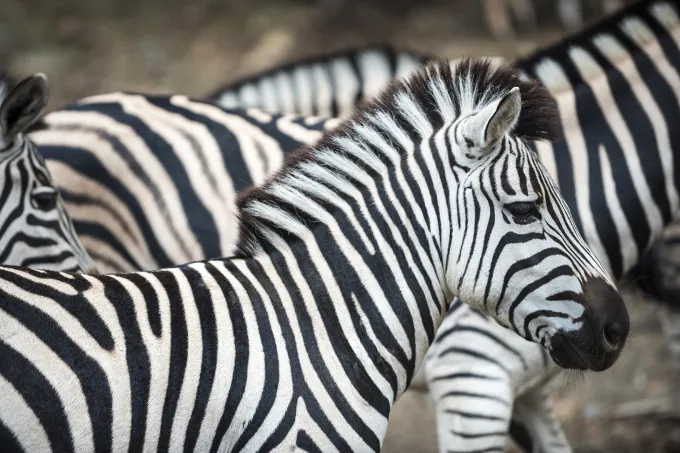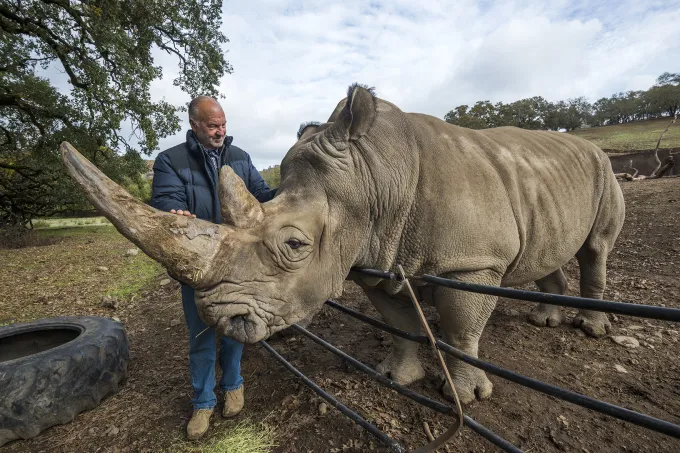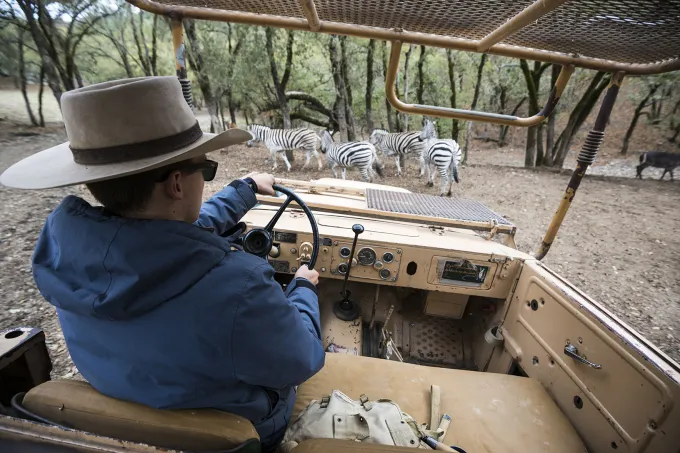On the night of October 8, an intense orange glow in the oak-studded hills above Santa Rosa signaled an inferno was about to roar into town.
As the wind-driven flames approached Safari West Wildlife Preserve, 77-year-old Peter Lang told his wife, guests, and employees to evacuate the 400-acre property. Then he “just disappeared,” he says.
Lang knew his family wanted him to obey the evacuation order, but he had 1,000 animals—including giraffes, cheetahs, rhinoceroses, and hyenas—to protect.
The exotic creatures live on a former cattle ranch in eastern Sonoma County, which Lang bought in the 1980s to house his private menagerie. He and his wife Nancy, a zoologist, started a captive breeding program with a focus on conservation and opened the preserve to the public in 1993.
Lang describes that first night of flames as “extraordinary, explosive, and fast moving. It was almost indescribable.” All night, Lang worked alone, stringing together hoses to douse spot fires that ignited as wind-borne embers rained on the grass.
“I used garden hoses. I used shovels. I used forklifts to move flammable materials. It went on from about 10:30 at night until 8:30 the next morning,” Lang says.
Lang drove around the perimeter of Safari West, spraying or stamping out hotspots and moving animals from one enclosure to another to keep them out of danger.
“I stayed on the move all night. There’s a lot of adrenaline, so you don’t have time to get tired,” he says. “The fire was everywhere. Some areas were fully engulfed in flames.” His family compound was one of those areas, located about a mile away. All four family homes were ravaged by fire while he worked to protect the preserve. “I could see the glow as it burned,” he says.
Still, Lang says he was fortunate. “The wind-driven part of the fire storm went over the top of [Safari West] and past us, so we had a tremendous break,” he says.
When it was all over, the fire had damaged the preserve’s fences, vehicles, and a few smaller structures. Some 200-year-old oak trees burned, Lang says. But none of the animals suffered any injuries, and all of the major buildings at Safari West were intact.
Visit Safari West
Lang reopened Safari West on Nov. 20. The preserve will hold a Thanksgiving dinner Nov. 23 and an official “grand reopening” party on Dec. 2–3.
Visitors can sign up for an open-air Jeep tour through the “Sonoma Serengeti,” where they get a close-up look at as many as 90 different African animal species. On the tour, flamingoes and zebras dazzle camera-toting guests with their otherworldly colors. Cape buffalo and antelope roam the rolling grasslands and oak woodlands. Ostriches and giraffes poke their heads inside the vehicles, looking for handouts.
Guests at Safari West can also stay overnight in tent cabins that overlook the giraffe and antelope enclosures. The luxurious, safari-style cabins with cozy beds, hardwood floors, bathrooms, and electric lights were saved from the blaze, but they won’t reopen until March 1, says Aphrodite Caserta, Safari West’s marketing and communications director. They are undergoing a thorough cleaning and refurbishing.
Lang says that the preserve’s giraffes, antelope, bison, zebras, gazelles, and ostriches won’t notice much of a difference in the fire’s aftermath, except for an abundance of greens. He has already begun reseeding the burned areas of the property.
“The animals will be happy to have a lot more grass than before,” Lang says. “This year we bought about six times as much seed as we would normally buy.”
Caserta adds that Safari West is eager for visitors. “We’re ready to load up the trucks and get back out there on safari … We’re coming back, and we’re coming back strong.”


